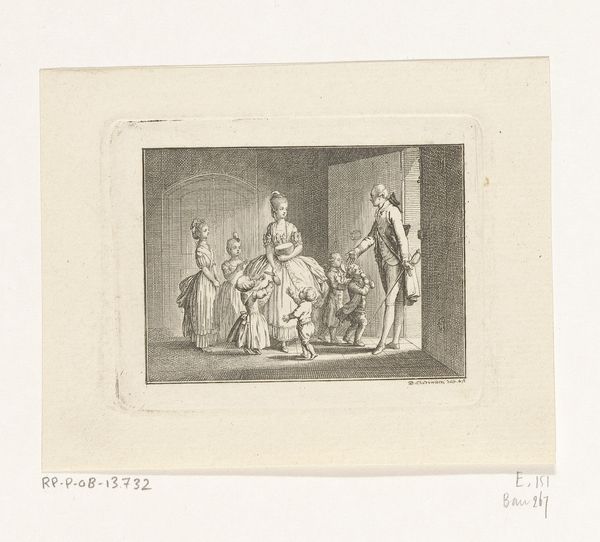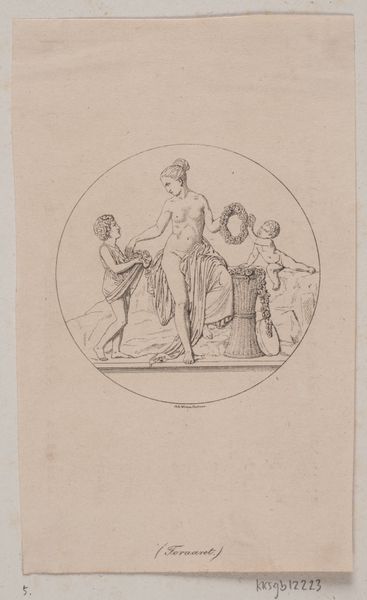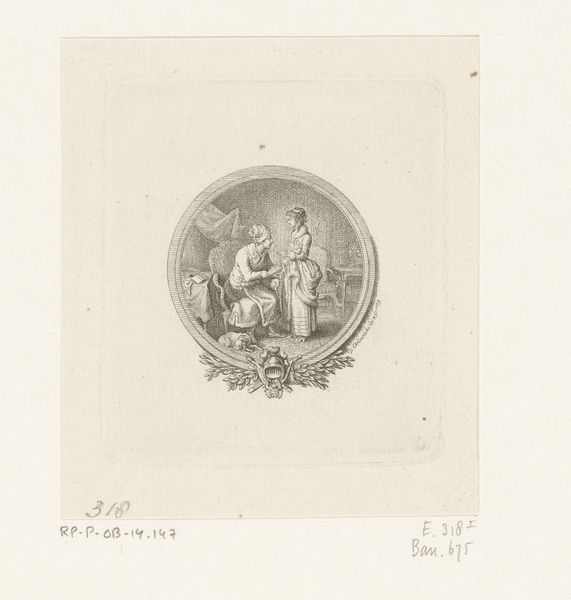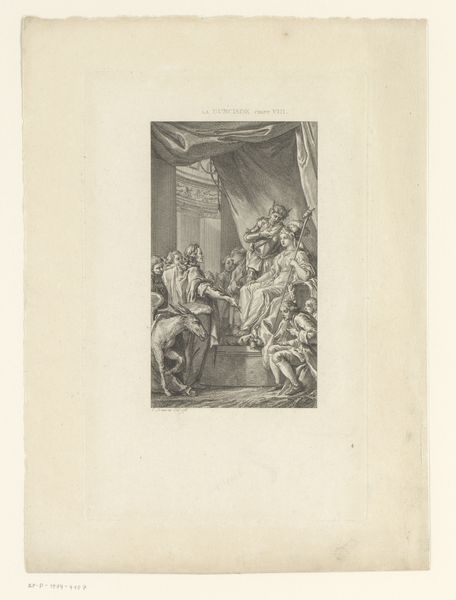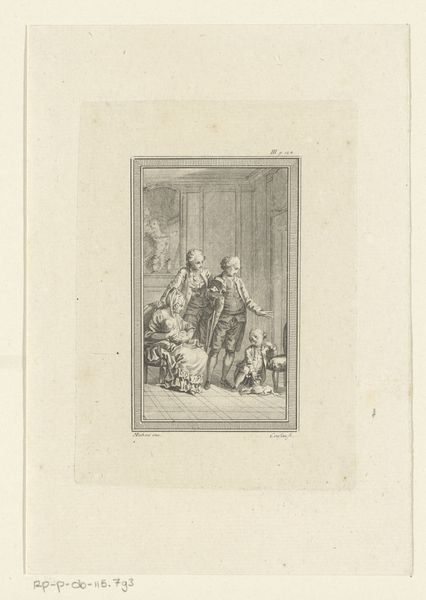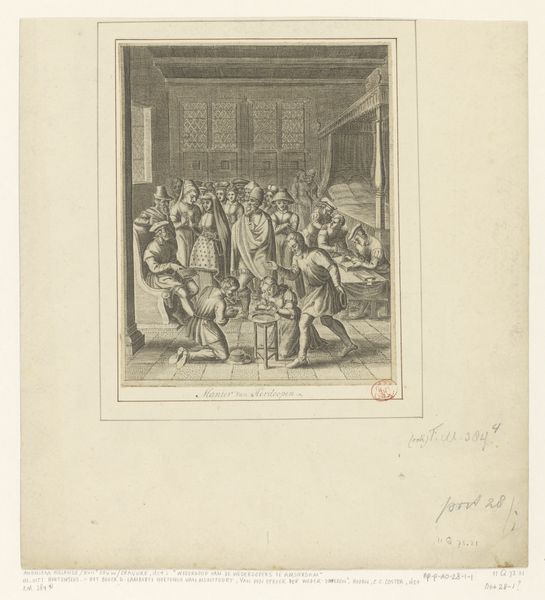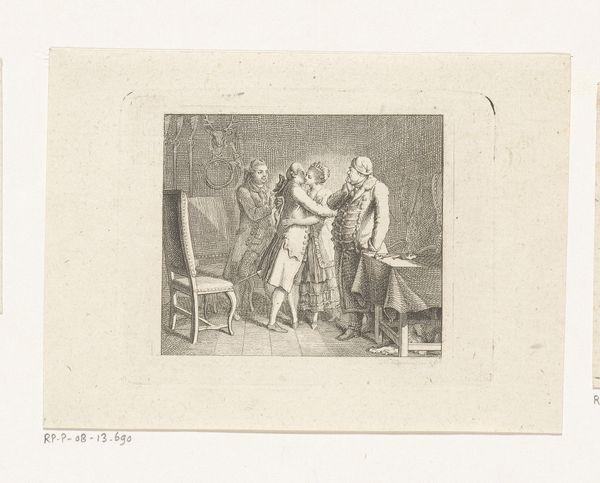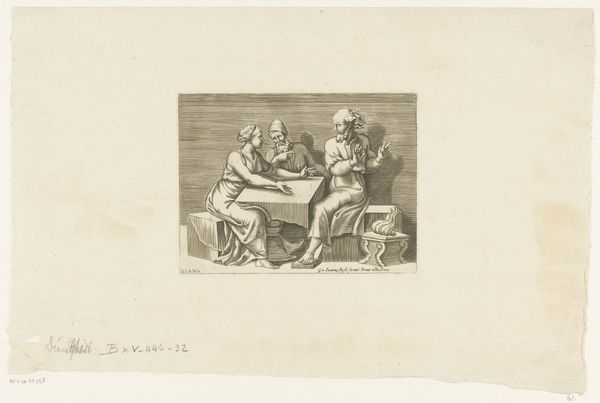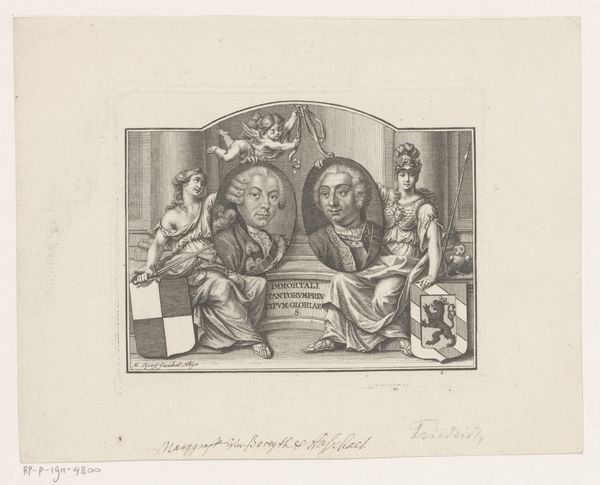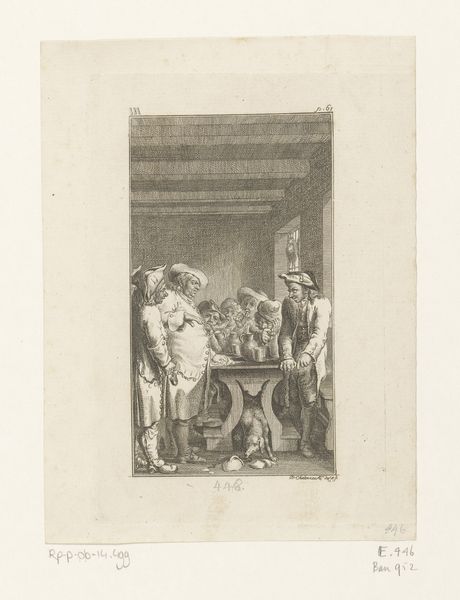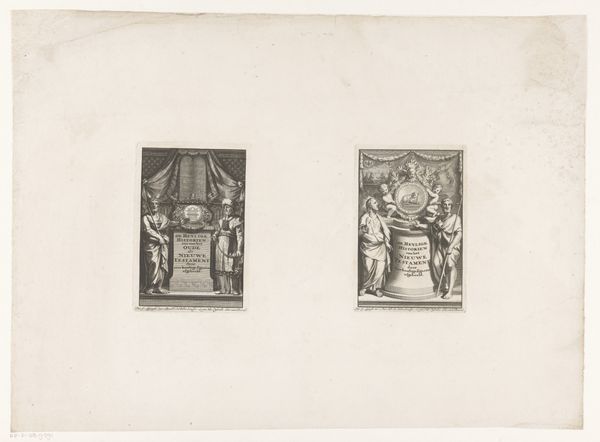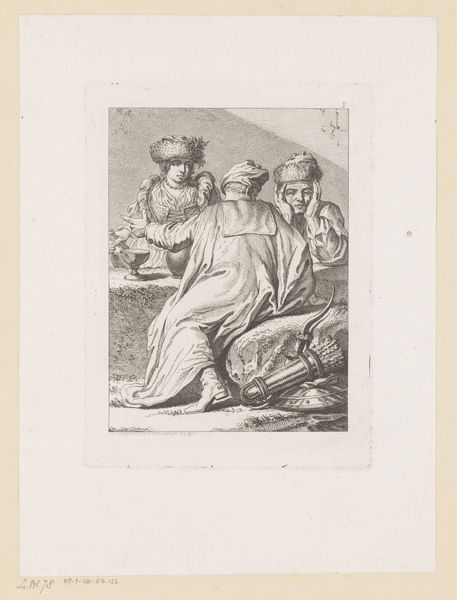
drawing, engraving
#
portrait
#
drawing
#
academic-art
#
engraving
Dimensions: height 82 mm, width 104 mm
Copyright: Rijks Museum: Open Domain
Curator: Before us, we have "Four Portraits of Painters," an engraving likely dating from the latter half of the 19th century, credited to F. Herinck. The print features a quartet of artists' portraits held by two draped, allegorical female figures. Editor: My immediate impression is that of homage—a respectful, if slightly stiff, tribute. The rendering feels intentionally classical. The portraits themselves appear like embedded icons within this scene. Curator: The format reflects the Academic art traditions prevalent at that time, striving to immortalize the artists within a classical framework, imbuing them with the grandeur of past masters. We see art institutions shaping not only artistic practice, but its historical narrative too. Editor: And each of the draped female figures framing these portraits—they seem to symbolize classical virtue and inspiration, as if these painters were elevated by such qualities. That, paired with the visual weight the figures give to this memorial of four painters, communicates respect for the Old Masters, a theme that carries such cultural resonance. Curator: Absolutely. We also should observe how these engravings, being reproducible, allowed for broader dissemination of the image and by extension, for these artists to attain symbolic, public roles as figures worthy of reverence, something that’s heavily driven by artistic institutions themselves. Editor: Indeed. The act of replication through engraving ensures wider accessibility, reinforcing cultural values, especially when it concerns celebrating creative heritage through symbolic artistic language. Even the neutral background enhances the image, bringing forth the rich textures and fine details of their countenances. Curator: When looking at these images it becomes difficult not to think about current tastes. Do we give public recognition to artists of our time using similar memorializing gestures? I don’t think so, tastes and institutions have obviously changed. Editor: What strikes me most is the enduring appeal of portraying creative luminaries as figures who transcend mortality. We still build legends, just using new icons and a new symbolic visual language, but at their core they echo familiar ancestral patterns. Curator: It does make you consider the layers of meaning an image accumulates across generations, doesn’t it? It highlights the politics and culture that go into memorializing historical figures of the Arts. Editor: Indeed. From classical allusions to reproduced images, each layer tells us something about enduring artistic memory and human drive for lasting recognition, something to be contemplated every time we look at symbols.
Comments
No comments
Be the first to comment and join the conversation on the ultimate creative platform.

